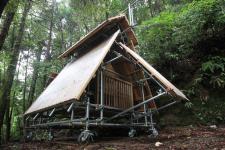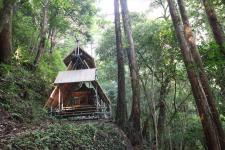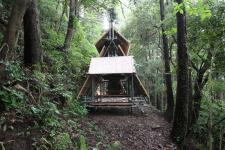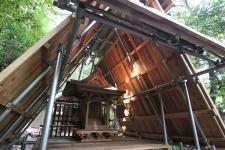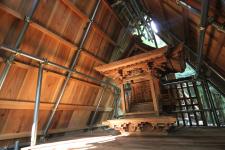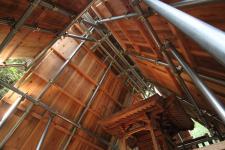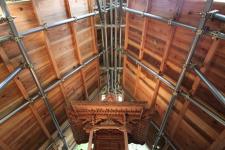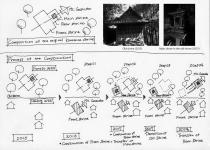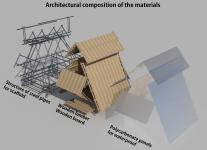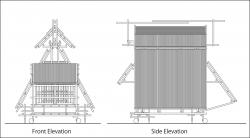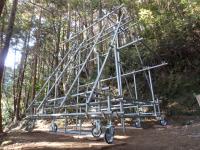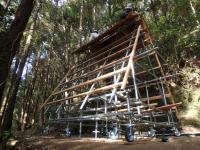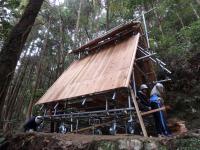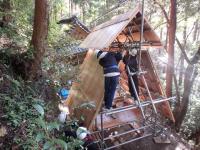This is a self-built portable shrine in a depopulated village in the moutain region of Kochi in Japan. In 2015, the pre-existing shrine called Kanamine-jinja was deeply injured by a heavy typhoon that hit the village. The Kanamine Shinto shrine had two architectural components: one is the front shrine dedicated to worshipers while the other was the rear shrine, where main shrine was set.
The original shrine had its architectural axis geared towards mount Gozaisyo-yama — a sacred mountain located ten kilometer from the shrine. The shrine’s site was too narrow and had partly collapsed which resulted in a building that could no longer be maintained anymore. As a solution, we decided to divide the building into two smaller shrines: the frontal area is a housing area for inhabitants and the worshipers while the rear shrine is set in front of the original shrine in the forest. Before demolition of the original shrine, the main shrine set in the original shrine was transferd into the rear shrine.
Both front shrine and rear shrine have to be set on the axis toward mount Gozaisyo-yama, according to the axis of the original shrine. However the rear shrine was set in the too narrow and limited site in front of the original shrine, so it could not be set on the axis toward the sacred mountain. After clearance of the broken original shrine, we have to transfer the rear shrine into the site where the original shrine was set, and locate the rear shrine on the axis toward sacred mountain. So the rear end features eight wheels attached to the bottom of the structure, rendering it portable.
2016
2017
Site area: 20.56m2
Building area: 9.00m2
Total floor area: 4.05m2
Structure: Steel pipe structure for scaffold
Materials:
Steel pipe for scaffold (1000mm long/2000mm long /3000mm long/3500mm long/4000mm long)
Wooden lumber (45mm×45mm×4000mm)
Wooden board (240mm×24mm×2000mm)
Client: Inhabittants of Nakagonyu Saoka + Kochi University of Technology
Architet: Kikuma Watanabe
Structural Engineer: Syunya Takahashi+D Environmental Design System Laboratory
Construction: Lab. for Design of Architecture adapted to Environment at Kochi University of Technology
Yuki Ueta, Naoki Omichi, Shin Ohno, Takeru Kusumoto, Kohei Suzuki,
Mio Fujibayashi, Hirokazu Wakabayashi, Azusa Uematsu, Ryo Kodama, Takumi Nishida, Kota Mishima
Movable Shinto Shrine in the Mountains of Kochi in Japan by D Environmental Design System Laboratory in Japan won the WA Award Cycle 26. Please find below the WA Award poster for this project.
.jpg&wi=320&he=452)
Downloaded 56 times.
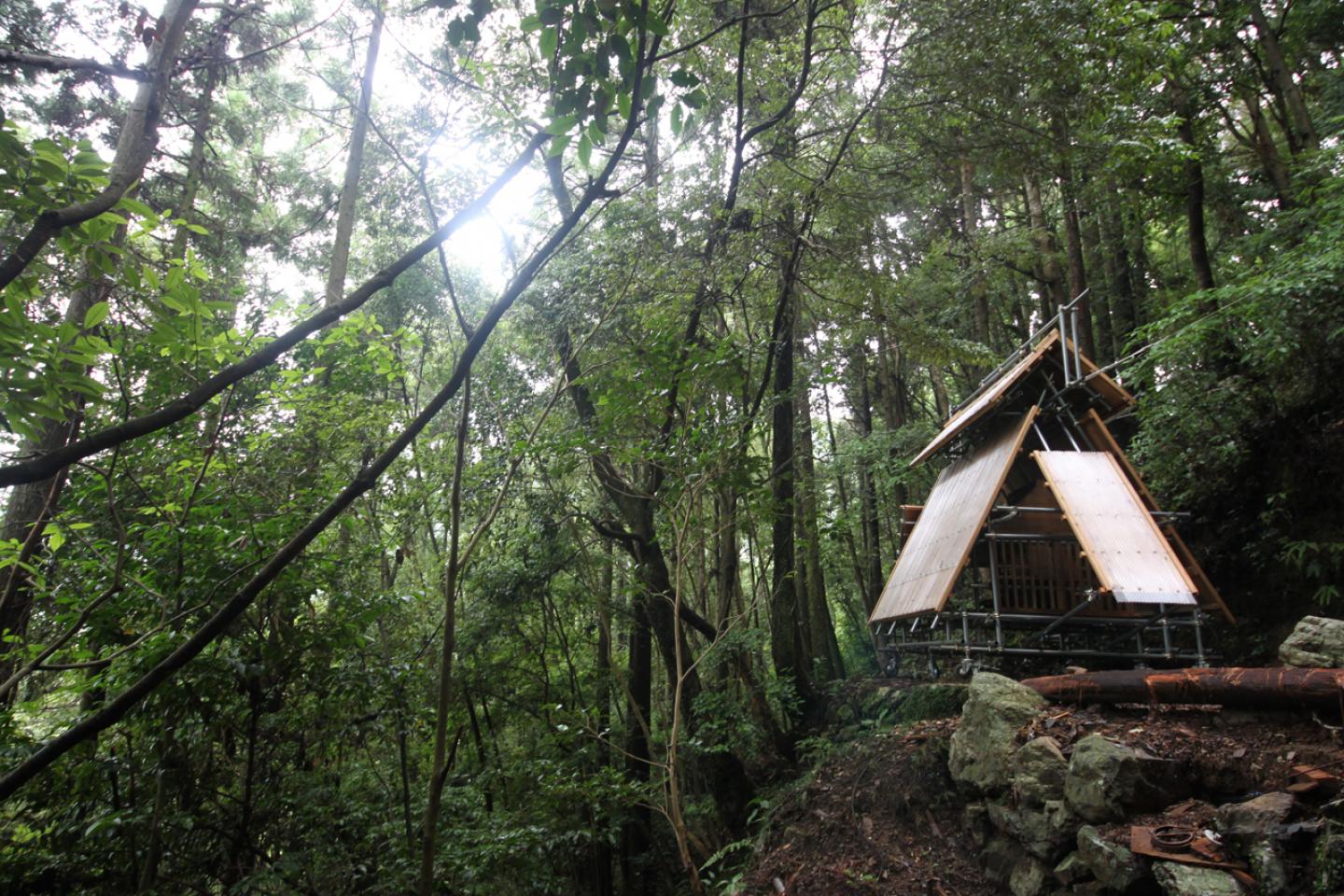
.jpg)

